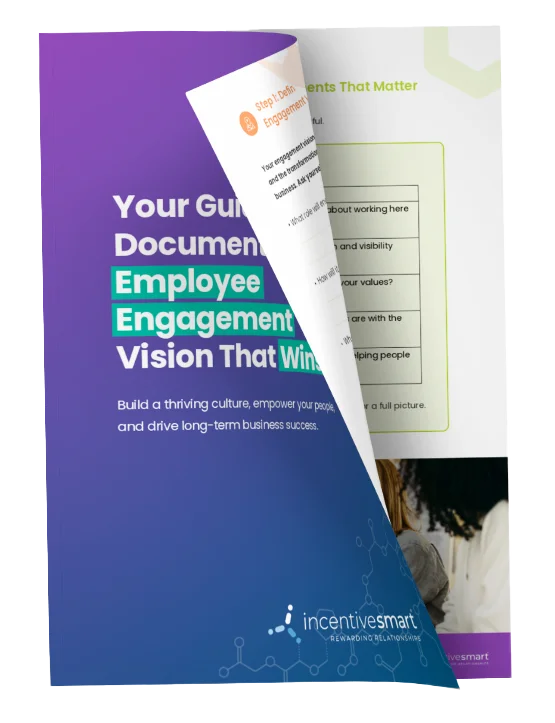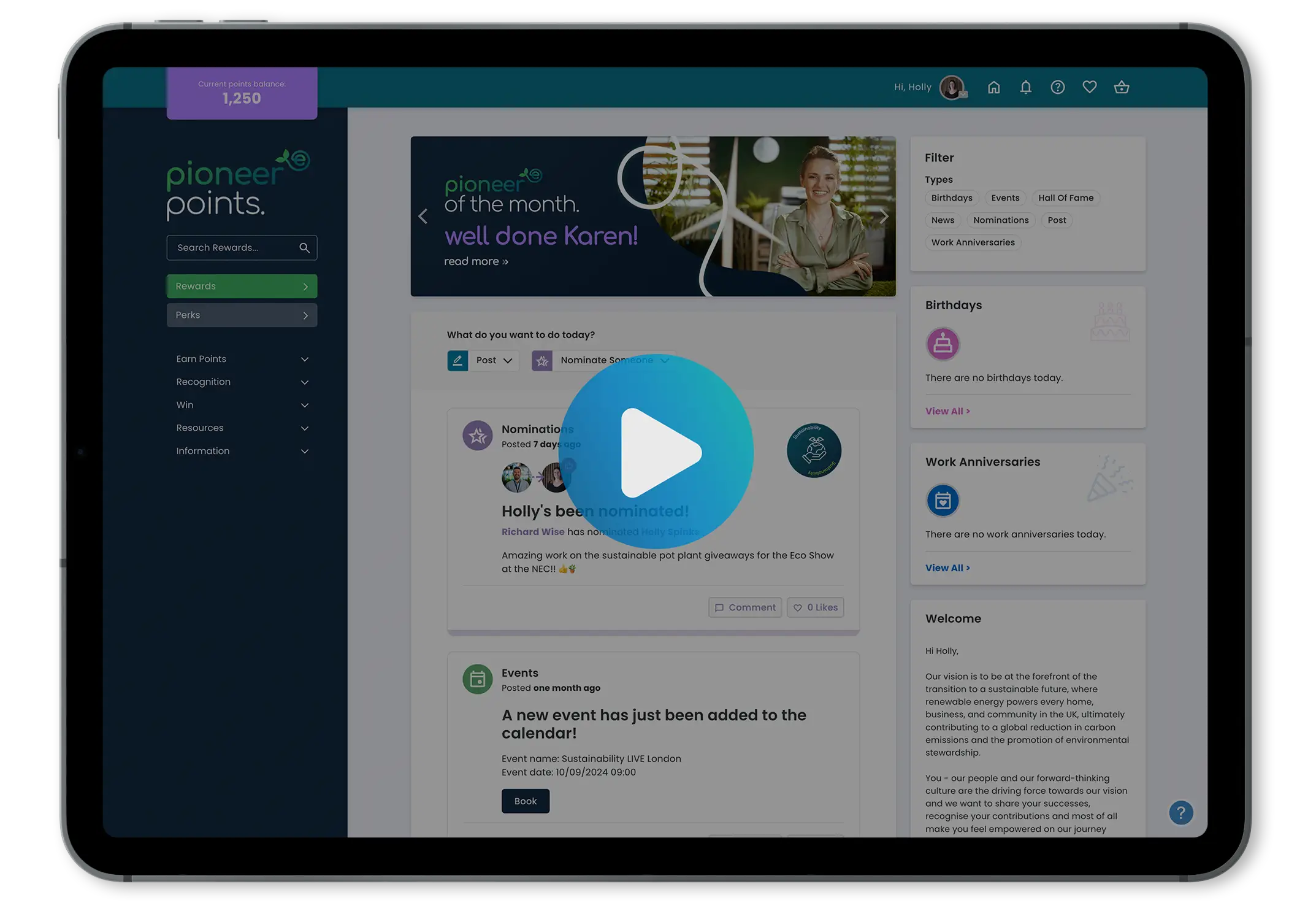


A great workplace culture doesn’t just appear overnight. It’s built intentionally, day by day. Whether you call it your company culture or simply the way things are done around here, it shapes how people feel, behave and perform.
If you want to make that culture a little less “Monday morning dread” and a bit more “Friday feeling”, start by focusing on clarity, communication and connection.
In this guide, we’ll explore what makes an organisational culture truly thrive, share practical steps for how to improve your own workplace culture, and offer tips on how to change it for good, creating a happier, more motivated workforce along the way.
Skip to:
What is company culture?
Company culture is essentially the personality of your organisation. It’s the shared values, attitudes and behaviours that shape how people work together every day. It’s the unspoken “this is how we do things” that influences everything from how teams collaborate with one another to how they celebrate success (or handle the odd hiccup).
And no, this has nothing to do with beanbags, birthday cakes or Friday drinks.
A great culture runs much deeper.
Companies where culture drives their success create an environment where people feel respected, supported and motivated to do their best work — whether they’re in the office, on-site or working from the kitchen table.

Why improving workplace culture matters
A positive culture attracts top talent, boosts productivity and strengthens trust. People feel supported and appreciated, and so, they’re more likely to go above and beyond.
When culture is strong, people feel a genuine sense of belonging and purpose. So they’re more engaged and far more likely to stick around.
In contrast, when it’s weak, cracks start to show. A negative or unclear culture can create silos and stifle innovation. Motivation dips, burnout creeps in and top talent either quietly shuts off or heads for the door.
When you get culture right, everything else tends to fall into place.

How to Improve Company Culture: 10 Areas of Focus
If you want to know how to change company culture for the better, start by assessing what’s working and what isn’t.
Employee surveys, focus groups and open conversations can reveal gaps between your stated values and day-to-day reality.
If you really want to improve the culture of an organisation, you’ll need to start at the top. Leaders set the tone. Not through slogans or values posters, but through everyday actions, habits and the conversations they have with their teams.
Culture isn’t what’s written in the handbook; it’s what people experience when no one’s watching. Those small, consistent actions make a big difference.
Here are the foundations you can use to build a strong company culture in a way that actually lasts:
 Establish clear core values (and live them!)
Establish clear core values (and live them!)
Start by getting crystal clear on what you actually stand for.
Your core values are the backbone of your organisation. They’re the principles that guide decisions, shape behaviour and set the tone for how people treat one another.
Too often, values end up as a list of buzzwords framed in reception or buried somewhere on the intranet. But if your people can’t remember them and understand how to live by them, then, they’re not really values, they’re merely wallpaper.
So keep your values simple and relevant to the everyday work your teams do.
They should help people make decisions when no one’s watching, and feel confident they’re doing the right thing.
And leaders have to live and breathe those values first. Culture starts at the top. If leadership doesn’t model the behaviour they expect from others, even the best-written values will fall flat.
Defining and embedding your values is one of the most powerful ways to improve the culture of an organisation. It gives everyone a shared language and purpose, which lays the building blocks for a company that really starts to feel like a community.

 Foster transparent communication
Foster transparent communication
Open, honest communication builds trust and breaks down barriers. When people feel informed and included, they’re far more likely to engage and contribute.
💡 Organisations with transparent communication are 12x more likely to have highly engaged employees.
So make transparency the norm.
Share updates regularly (even when the news isn’t perfect). Encourage questions and genuinely listen to feedback. Teams should never feel like they’re the last to know what’s going on or that their feedback goes into a black hole.
Leaders who communicate clearly and consistently set the tone for the rest of the organisation. They show that information isn’t power to be hoarded, but a tool to help everyone succeed together.
John Lewis Partnership is a great example. Their open forum meetings and democratic employee councils encourage honest discussion, helping over 80,000 Partners feel genuinely heard.
 Create psychological safety
Create psychological safety
A psychologically safe workplace breeds innovation and collaboration.
A safe environment is one where people can share ideas, make mistakes and speak up without fear of being judged or punished.
You can start by making it safe for people to be honest. Encourage curiosity, welcome different perspectives and treat mistakes as learning opportunities.
As confidence grows, so too does creativity. Which is the difference between a team that quietly ticks boxes and one that pushes boundaries.
 Recognise and reward great work
Recognise and reward great work
A simple thank you or public shoutout can do wonders for morale. People don’t just want a payslip; they want to feel appreciated… so why not make this a feeling they receive every week?
Recognition doesn’t need to be grand or expensive.
Peer-to-peer appreciation, monthly highlights or a digital wall of fame all go a long way. The key is consistency. Don’t wait for the annual review to tell someone they’re doing a brilliant job.
When recognition becomes part of everyday culture, motivation skyrockets. Employees feel seen, valued and eager to keep performing at their best.
A simple “thank you” can go further than you think. Gallup reports that employees who feel recognised are 4.6x more likely to feel engaged at work.

 Promote flexibility and autonomy
Promote flexibility and autonomy
One of the biggest shifts in company culture comes from ownership and treating people like adults.
People value trust and autonomy more than ever. When employees can manage their time and work in ways that suit them best, engagement and productivity naturally rise.
Flexible hours, hybrid working and results-focused management show that you trust your team. Micromanagement, on the other hand, kills creativity faster than you can say “status update.”
💡 Flexible working doesn’t just attract talent, it keeps it. Companies offering hybrid or remote options see 35% lower turnover than those that don’t.
So give people the freedom to do their jobs well — their way. It sends a powerful message: We believe in you.
That’s the kind of respect that builds lasting loyalty.
At Unilever UK, flexible working is a cornerstone of their culture. Their “Agile Working” policy led to a 25% increase in productivity and improved work–life balance across the board.
 Encourage social connections
Encourage social connections
Workplace culture is built on connections. Therefore, one simple way to improve the culture of an organisation is to make time for people to bond outside their usual roles.
Whether it’s a team lunch, charity challenge, walking meeting or just a coffee and catch-up, these moments matter, as they remind everyone they’re part of something bigger.
💡 Great culture thrives where people genuinely like the people they work with.
In a world of hybrid working, connection takes a little more effort, but the payoff is huge. A team that laughs together works better together.
BT Group, for instance, runs employee-led clubs and volunteer networks that help staff connect over shared passions, from running groups to sustainability projects.

 Offer opportunities for growth
Offer opportunities for growth
When people feel like they’re learning, they stay motivated. When they feel stuck, they start scrolling job boards. Providing training, mentoring and clear progression paths is one of the smartest ways to give culture a boost.
Remember, growth doesn’t always mean promotion.
It could be new skills, stretch projects or cross-department collaboration. What matters is showing employees that you’re invested in their future, not just their output.
💡 Lateral moves, mentoring and upskilling all strengthen culture by showing employees you’re invested in them.
A culture that supports growth not only attracts great talent, but keeps it. And that’s a competitive advantage money can’t buy.
Aviva created a learning platform offering micro-courses employees can complete in 15 minutes a day — leading to a 30% rise in internal promotions.
 Break down silos
Break down silos
Nothing kills a positive workplace vibe faster than siloed teams. When departments don’t talk, information stalls, frustration builds and opportunities are missed.
💡 Teams that collaborate effectively are 5x more likely to be high-performing (Deloitte).
So encourage cross-team projects, hold regular knowledge-sharing sessions and celebrate joint successes.
When people understand how their work connects to the bigger picture — and to other teams — pride and performance both rise.
Collaboration turns a collection of departments into a unified organisation.
BBC Studios tackled this by creating cross-functional “creative pods” that mix producers, marketers and designers — leading to faster campaigns and higher engagement.
 Hire for culture fit (and a fresh perspective)
Hire for culture fit (and a fresh perspective)
The hiring process plays a massive role in shaping culture. Yes, you want people who align with your values, but you also want individuals who bring something new. Hiring solely for “fit” can lead to groupthink. Hiring for “fit and add” creates diversity and strength.
Be clear about your culture when recruiting. Look for candidates who share your ethos but can also challenge and enrich it.
That’s how you keep your organisation dynamic and forward-thinking.
This balance is key to improving culture in the long-term, blending shared purpose with fresh energy.
 Lead with empathy
Lead with empathy
If you take one thing from this guide, let it be this: empathy is everything.
The best leaders don’t just manage people, they understand them.
Empathy means listening and responding with care. It means recognising that everyone has a life beyond work, and that good wellbeing is essential.
When leaders lead with empathy, they create loyalty, trust and instill motivation. Which is key, after all, people don’t leave jobs; they leave managers. Empathetic leadership keeps them inspired to stay.

How to start changing culture in an organisation for the better
Changing culture can feel like trying to turn a cruise ship — it takes time, consistency of direction and a steady hand at the wheel. But it can be done. The key is to be intentional, consistent and patient.
Kick start your efforts by defining what good looks like.
What kind of workplace do you want to be? What behaviours, values and attitudes will get you there? Once you’ve got that vision clear, it’s time to bring everyone on board.
Change only sticks when people understand why it’s happening.
Communicate openly and often. Don’t just cover what’s changing, but delve into why it matters. When employees can see how a stronger culture benefits both them and the organisation, they’ll be far more willing to get behind it.
Next, align your systems and everyday habits with the new culture you’re trying to build.
If you want collaboration, stop rewarding individual heroics. If you want innovation, make it safe to take risks. If you want inclusivity, make sure every voice genuinely has a place at the table.
💡 Leaders need to model the change visibly and consistently. You can’t build trust with “do as I say, not as I do.” Real transformation happens when leadership walks the talk.
Finally, celebrate progress.
Every small win deserves recognition, whether it’s a successful cross-team project or a helping hand given when needed. These moments remind everyone that the effort is paying off.
Changing culture isn’t about tearing everything down and starting fresh; it’s about evolving together. Step by step, conversation by conversation, you’ll see the shift. And that’s when culture stops being an abstract idea and starts being your organisation’s greatest asset.
Lloyds Banking Group, for example, transformed its internal culture through a five-year “Helping Britain Prosper” strategy, combining purpose-led values with measurable leadership accountability — resulting in record employee engagement.

Building a positive working culture that lasts
So, you’ve defined your values, strengthened communication and started recognising great work, brilliant. But how do you keep that momentum going?
The best cultures aren’t static, they adapt.
That means checking in regularly to see what’s working and what isn’t. Run engagement surveys, host listening sessions, or simply ask your teams for honest feedback. When employees see their suggestions shaping real change, they feel valued and invested in your success.
Consistency is key.
Keep your core values alive in everything you do — from onboarding and performance reviews to leadership meetings and recognition programmes. Culture thrives when it’s woven into daily life, not treated as an annual reminder,
Improving culture isn’t a one-person job. Everyone plays a part, from the boardroom to the breakroom. So encourage shared accountability for living the values you’ve set.
Keep listening, keep learning and keep showing your people that their experience truly matters.
Recap: 10 Top Tips to Improve the Culture of an Organisation
Here are ten quick, proven ways to boost culture right now:
- Define and share your company’s purpose and values.
- Recognise hard work publicly and consistently.
- Encourage honest feedback (and act on it).
- Empower employees with autonomy and trust.
- Prioritise wellbeing and work-life balance.
- Offer regular learning and development opportunities.
- Celebrate wins — big or small — across all departments.
- Ensure leaders embody company values every day.
- Foster collaboration across teams and levels.
- Keep listening, adapting and evolving your culture.
A thriving workplace culture grows stronger every time someone speaks up, supports a colleague, or feels proud of what they do.
Real culture lives in those everyday moments of trust, care and connection.
And the impact is undeniable…
💡 Companies with highly engaged teams see up to 21% higher profitability and 17% greater productivity.
💡 Organisations that prioritise recognition report 31% lower turnover.
💡 When employees feel their voice is heard, nearly 5x more say they’re motivated to perform their best.
Sustaining culture means staying curious and open to change. Keep listening to your people, keep adapting and never lose sight of what makes your organisation unique. When values and actions align, culture becomes the reason people thrive..



![*FREE GUIDE* How to implement a fantastic company culture in 6 steps Enter your business email for instant access. {{ include_custom_fonts({"Poppins":["Semi Bold"]}) }}](https://no-cache.hubspot.com/cta/default/5921162/interactive-188034983837.png)





